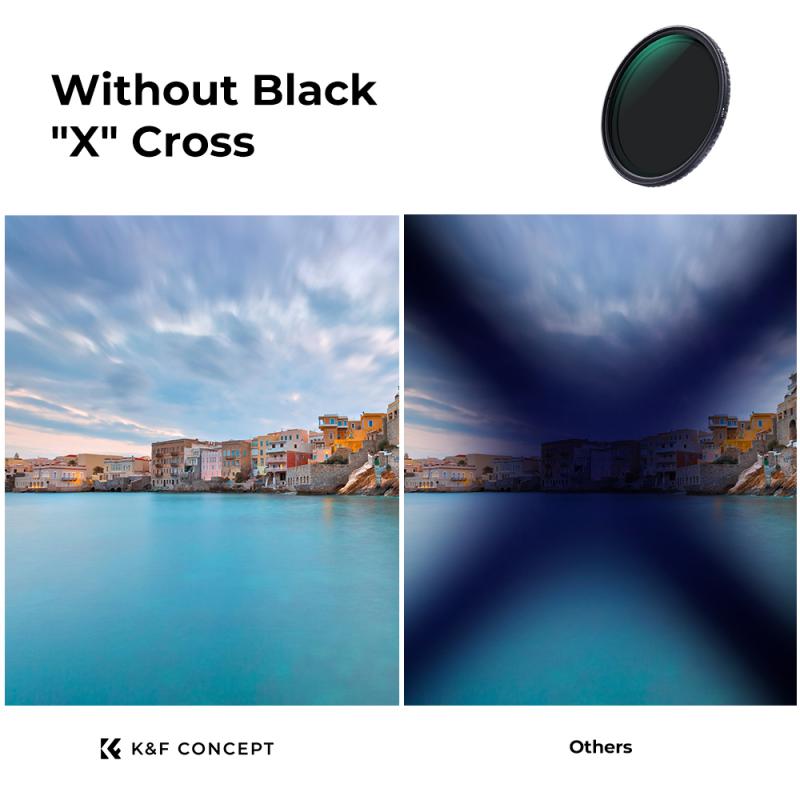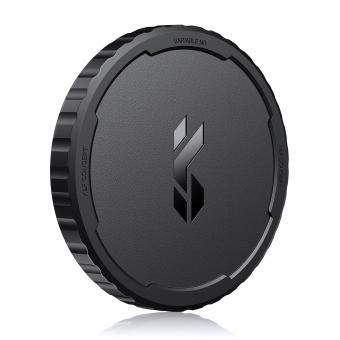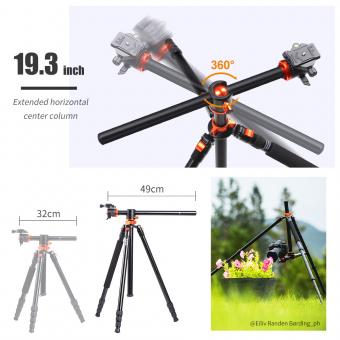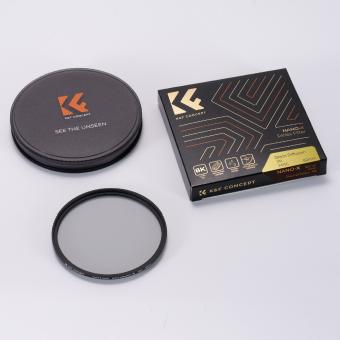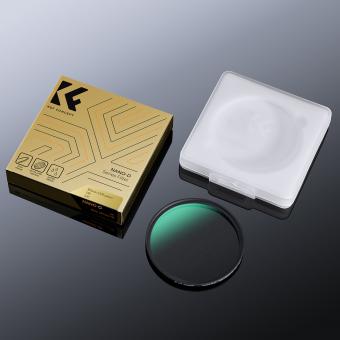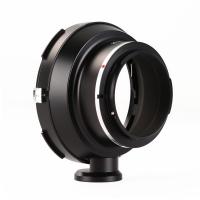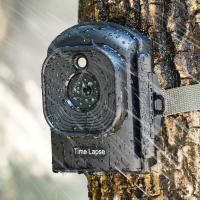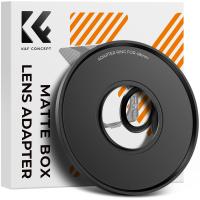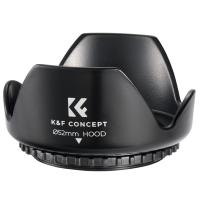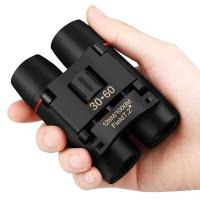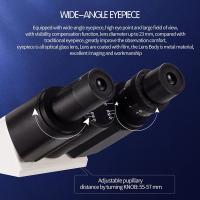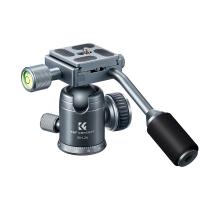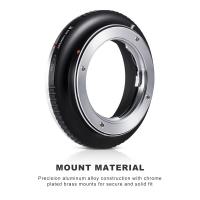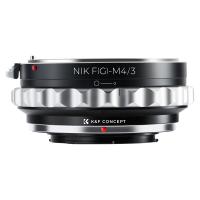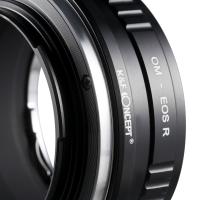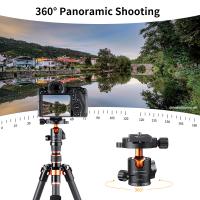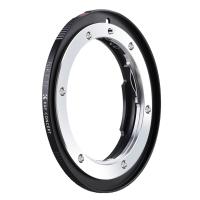How To Buy Nd Filters ?
To buy ND filters, you can follow these steps:
1. Determine the filter size: Check the diameter of your camera lens to determine the correct filter size you need. It is usually mentioned on the front of the lens or in the lens specifications.
2. Choose the filter strength: ND filters come in different strengths, denoted by the number of stops they reduce the light. Decide on the strength based on your specific needs, such as the amount of light reduction required for your photography.
3. Select the type of ND filter: There are various types of ND filters, including screw-on filters, square filters, and variable ND filters. Choose the type that suits your camera and shooting style.
4. Research and compare: Look for reputable camera stores or online retailers that sell ND filters. Read reviews, compare prices, and check the specifications to find the best option for your budget and requirements.
5. Make the purchase: Once you have decided on the specific ND filter you want, proceed to make the purchase either online or in-store. Ensure that you are buying from a reliable source to get a genuine product.
Remember to take care of your ND filters by storing them properly and cleaning them regularly to maintain their quality and effectiveness.
1、 Understanding ND Filters: Types, Uses, and Benefits
Understanding ND Filters: Types, Uses, and Benefits
ND filters, or Neutral Density filters, are essential tools for photographers and videographers. They are designed to reduce the amount of light entering the camera lens without affecting the color or quality of the image. This allows for greater control over exposure settings and creative possibilities in various shooting conditions. If you're looking to buy ND filters, here's a guide to help you make an informed decision.
1. Determine your needs: Consider the type of photography or videography you engage in. Different ND filters have varying light reduction capabilities, measured in stops. Decide whether you need a filter for landscape photography, long exposure shots, or video recording.
2. Research filter types: There are various types of ND filters available, including screw-on filters, square filters, and variable ND filters. Each has its own advantages and disadvantages. Screw-on filters are easy to use and portable, while square filters offer flexibility and compatibility with different lenses. Variable ND filters provide adjustable light reduction but may introduce color cast.
3. Choose the right filter size: Ensure that the filter you purchase matches the diameter of your lens. Most lenses have the filter size indicated on the front, or you can refer to the lens specifications.
4. Consider filter quality: Look for high-quality filters made from optical glass or resin. Cheaper filters may introduce image distortion or color shifts. Coated filters are also preferable as they reduce reflections and flare.
5. Read reviews and seek recommendations: Before making a purchase, read reviews from trusted sources or seek recommendations from fellow photographers. This can help you gauge the performance and reliability of different brands and models.
6. Purchase from reputable sellers: Buy from authorized dealers or reputable online stores to ensure you receive genuine products and reliable customer service.
In conclusion, buying ND filters involves understanding your specific needs, researching different types, considering filter size and quality, and seeking recommendations. By following these steps, you can make an informed decision and enhance your photography or videography skills with the right ND filters.
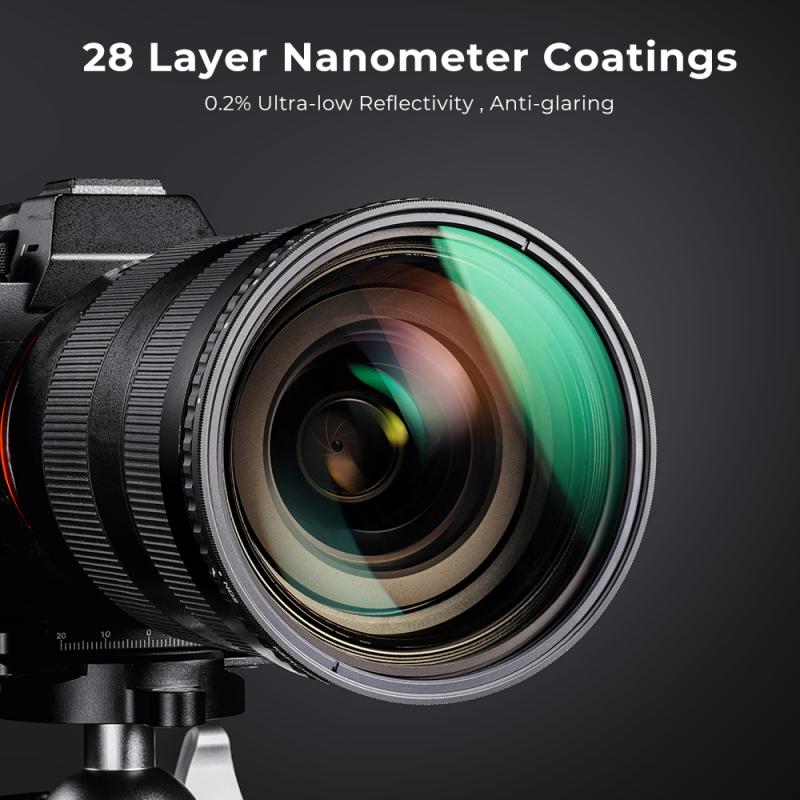
2、 Factors to Consider When Buying ND Filters
Factors to Consider When Buying ND Filters
ND filters, or neutral density filters, are essential tools for photographers and videographers looking to control the amount of light entering their cameras. These filters are particularly useful in situations where a long exposure or shallow depth of field is desired. However, with a wide range of options available in the market, it can be overwhelming to choose the right ND filter for your needs. Here are some factors to consider when buying ND filters:
1. Filter Density: ND filters come in different densities, ranging from ND2 to ND1000. The density determines the amount of light that is blocked, with higher numbers indicating greater light reduction. Consider the specific shooting conditions and the effect you want to achieve to determine the appropriate density.
2. Filter Size: ND filters are available in various sizes to fit different lenses. Ensure that you choose a filter that matches the diameter of your lens or invest in a filter holder system that allows you to use multiple filters with different lenses.
3. Filter Material: ND filters can be made from glass or resin. Glass filters are generally more expensive but offer better image quality and durability. Resin filters are more affordable but may be prone to scratches.
4. Filter Coating: Look for filters with multi-coating or nano-coating to reduce reflections, flare, and ghosting. These coatings help maintain image quality and minimize unwanted artifacts.
5. Price: Consider your budget when buying ND filters. While high-end filters may offer superior quality, there are also affordable options available that can still deliver satisfactory results.
6. Compatibility: Ensure that the ND filter you choose is compatible with your camera system. Some filters may cause vignetting or other issues when used with wide-angle lenses.
7. Reviews and Recommendations: Before making a purchase, read reviews and seek recommendations from other photographers or videographers. This can provide valuable insights into the performance and reliability of different ND filters.
In conclusion, when buying ND filters, consider factors such as filter density, size, material, coating, price, compatibility, and reviews. By carefully evaluating these factors, you can make an informed decision and choose the right ND filter for your photography or videography needs.

3、 Popular ND Filter Brands and Their Features
Popular ND Filter Brands and Their Features
When it comes to buying ND filters, there are several popular brands that offer high-quality options. Here are some of the top brands and their features to consider:
1. B+W: Known for their exceptional optical quality, B+W filters are made with high-quality glass and feature multi-resistant coatings to reduce reflections and flare. They offer a wide range of ND filters with different densities to suit various lighting conditions.
2. Hoya: Hoya filters are renowned for their excellent color accuracy and durability. They offer a variety of ND filters, including the popular ProND series, which provides consistent light reduction across the entire frame. Hoya filters also feature a slim profile, making them compatible with wide-angle lenses.
3. Tiffen: Tiffen ND filters are known for their consistent color neutrality and high-quality construction. They offer a range of ND filters, including the popular Variable ND filters, which allow you to adjust the density by rotating the filter. Tiffen filters are also available in different sizes to fit various lens diameters.
4. Lee Filters: Lee Filters are widely used by professional photographers and cinematographers. They offer a range of ND filters, including the popular Big Stopper and Little Stopper, which provide significant light reduction for long exposure photography. Lee Filters are known for their high-quality resin construction and excellent color accuracy.
5. Breakthrough Photography: Breakthrough Photography filters are known for their exceptional optical quality and color accuracy. They offer a range of ND filters, including the X4 ND series, which features a weather-sealed brass frame and a nano-coating to repel water and oil. Breakthrough Photography filters also come with a 25-year warranty.
When buying ND filters, consider factors such as the filter density, size compatibility with your lenses, and the specific features offered by each brand. Additionally, it's always a good idea to read reviews and seek the latest point of view from photographers and experts to ensure you make an informed decision.
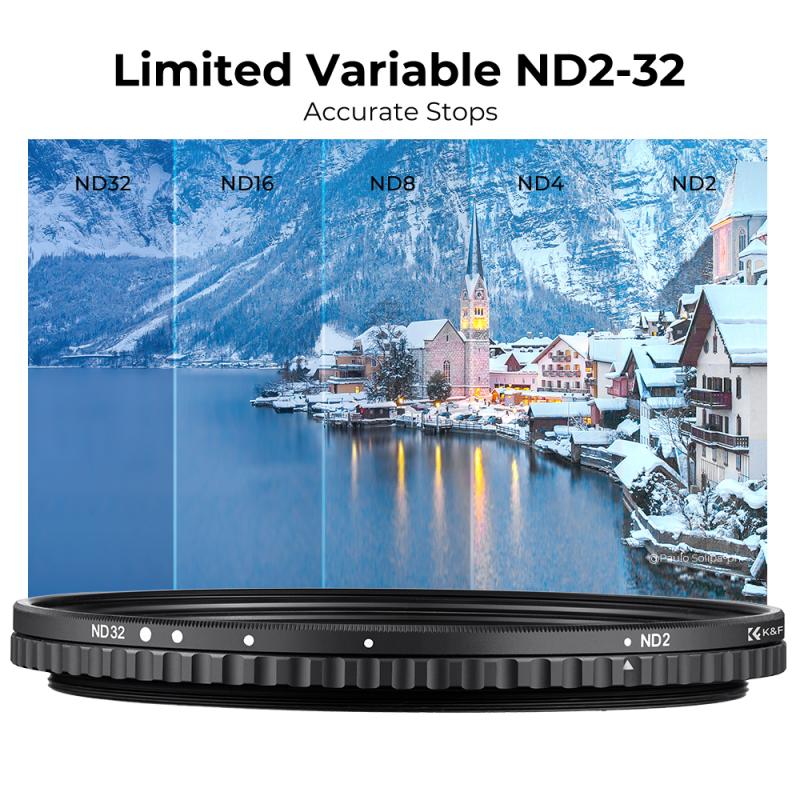
4、 Choosing the Right ND Filter Strength for Your Needs
Choosing the right ND filter strength for your needs is essential to achieve the desired effect in your photography. ND filters, or neutral density filters, are used to reduce the amount of light entering the camera lens without affecting the color or contrast of the image. This allows you to use longer shutter speeds or wider apertures in bright conditions, resulting in creative effects such as motion blur or shallow depth of field.
To buy ND filters, you can follow these steps:
1. Determine your photography needs: Consider the type of photography you do and the effect you want to achieve. Different strengths of ND filters are available, ranging from 1-stop to 10-stop filters, each allowing a different amount of light reduction.
2. Research reputable brands: Look for well-known brands that offer high-quality filters. Some popular options include B+W, Hoya, Lee Filters, and Tiffen. Read reviews and compare prices to find the best option for your budget.
3. Choose the filter size: ND filters come in various sizes to fit different lens diameters. Check the diameter of your lens and ensure that the filter you choose is compatible.
4. Consider filter material: ND filters are available in both glass and resin materials. Glass filters generally offer better image quality but are more expensive, while resin filters are more affordable but may have a slight impact on image sharpness.
5. Graduated ND filters: If you frequently shoot landscapes with a bright sky and darker foreground, consider purchasing graduated ND filters. These filters have a gradient that allows you to darken only a portion of the image, balancing the exposure.
6. Purchase from a reliable source: Buy from reputable camera stores or online retailers to ensure you are getting genuine products.
It's important to stay updated with the latest advancements in ND filter technology. Some newer filters offer additional features like nano-coatings to reduce reflections and improve image quality. Additionally, variable ND filters are gaining popularity as they allow you to adjust the light reduction by rotating the filter, providing more flexibility in different shooting conditions.
By following these steps and considering the latest advancements, you can confidently choose the right ND filter strength for your needs and enhance your photography skills.
